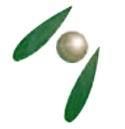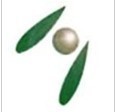
Product Description
| Generally, flavonoids are biological pigments providing colours from red to blue in flowers, fruit and leaves. Besides their coloring in plants, flavonoids have important roles in the growth and development of plants; protection against UV-B radiation; forming antifungal barriers; antimicrobial, insecticidal and oestrogenic activities; plant reproduction. Flavonoids also exhibit a wide range of biological properties including anti-microbial, insecticidal and oestrogenic activities. Flavonoids are usually classified into main 6 subgroups as below plus flavans, neoflavonoids, flavonols, aurons, catechins according to the structural patterns. Flavonols (Hydroxy derivatives of flavone): Fisetin, Galangin, Kaempferide, Kaempferol, Morin, Myricetin, Myricitrin, Quercetin, Quercetrin, Rhamnetin, Robinin, Rutin, Spirenoside Flavones (skeleton: 2-phenylchromen-4-one): Apigenin, Baicalein, Chrysin, Diosmetin, Diosmin, Flavone, Luteolin, Rpoifolin,Tangeretin, Techtochrysin, Rhamnazin, Nobiletin, Natsudaidain. Isoflavones (skeleton: 3-phenylchromen-4-one): Daidzin, Genistein, Irilone, Luteone, Prunetin, Pratensein, Flavonones (derivation by reduction of the 2(3) C=C bond): Eriodictyol, Hesperidin, Hesperetin, Likvirtin, Naringin; Naringenin; Pinocembrin |
Other Products in 'Starch Derivatives ' category
 |
A & Z Group Co.,Ltd
All Rights Reserved.(Terms of Use) Developed and Managed by Infocom Network Private Limited. |
 English
English Spanish
Spanish French
French German
German Italian
Italian Chinese (Simplified)
Chinese (Simplified) Japanese
Japanese Korean
Korean Arabic
Arabic Portuguese
Portuguese





 Send Inquiry
Send Inquiry